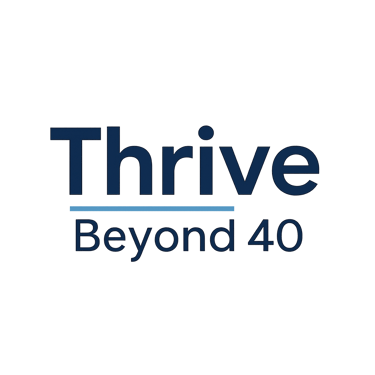Why Recovery After 40 Requires More Than Just Rest Days
Learn why true recovery after 40 demands both physical and mental strategies. Build strength, resilience, and focus by mastering smarter active recovery techniques.
FITNESS
Thrive Editorial
4/28/20252 min read


You crush it at the gym, push your limits on the track, and put in the work to build strength and endurance.
But if you're serious about thriving after 40, what you do between workouts matters just as much as your time under the bar.
Recovery isn’t passive anymore — it's an active process that fuels growth, resilience, and longevity, for both your muscles and your mind.
Physical Recovery: More Than Couch Time
After a hard training session, you already know that going back in and hammering the same muscle groups the next day is a recipe for burnout or injury.
Active recovery — low-intensity movement like walking, cycling, stretching, or yoga — speeds up muscle repair by boosting blood flow without creating new stress.
It keeps your body primed, your joints mobile, and your energy system resilient.
Rest days aren't about doing nothing — they're about doing the right kind of work.
Cognitive Recovery: The Overlooked Edge
Turns out, your brain needs active recovery just as much as your body does.
Research from Andrew Bennett, Ph.D., shows that even ten minutes of intense mental concentration can lead to measurable fatigue.
Push too hard, too long, and your attention, focus, and performance suffer — whether you’re in the gym, the office, or anywhere else.
The fix?
Microbreaks that engage your mind just enough to refresh it, not drain it.
Think about it like this:
You wouldn’t train heavy legs two days in a row.
Your brain’s "muscle," the prefrontal cortex (PFC), needs the same kind of smart cycling between focus and "unfocus."
The Power of Novelty and Humor
One surprising recovery tool?
Novelty.
New experiences — even something as simple as watching a funny clip — can recharge your brain's pleasure centers and boost your mental energy.
A study showed that people who took quick breaks to watch Saturday Night Live clips reported more vigor, better attention, and less fatigue compared to those who just stretched or meditated.
Humor, new sounds, new visuals — they all activate your brain’s dopamine system, enhancing focus and learning.
This doesn't mean zoning out on endless Netflix marathons.
It’s about short, deliberate bursts of something fresh to reset your cognitive firepower.
Why This Matters After 40
Recovery habits that worked in your 20s — crash on the couch, binge a few shows, or just sleep it off — don’t cut it after 40.
Your body and brain need targeted recovery strategies that maintain energy, sharpen focus, and protect long-term performance.
Without smart recovery, you’re not just risking sore muscles or fatigue — you're opening the door to burnout, cognitive decline, and a slower, less resilient life.
Consistency wins
Small, strategic recovery practices layered into your daily life are the secret weapon for thriving beyond 40.
Action Plan for Active Recovery After 40:
Schedule true active rest days (walking, stretching, yoga, low-impact cardio)
Use 1–9 minute microbreaks during mental work
Inject novelty: watch a quick comedy clip, explore new music, take a different route during walks
Alternate focus and unfocus modes: allow mental wandering between heavy work sprints
Protect your sleep and hydration as non-negotiable recovery pillars
Final Thoughts:
Your next breakthrough won’t come just from lifting heavier or working longer — it’ll come from recovering smarter.
Train hard, recover hard, and build a foundation that carries you through your strongest decades yet.
